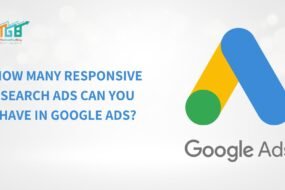
In today’s fiercely competitive business landscape, capturing your audience’s attention and persuading them to take action is more challenging than ever. This is where a well-crafted marketing pitch comes into play. But what exactly is a marketing pitch, and why is it crucial for your business’s success?
In this blog post, we’ll delve into the definition of a marketing pitch, explore its significance in the modern marketing landscape, and provide you with a comprehensive overview of what you can expect to learn as we embark on this journey of mastering the art of persuasion.
What Is A Marketing Pitch?
A marketing pitch is a concise and persuasive message or presentation that aims to communicate the unique value of a product, service, idea, or brand to a specific target audience. It is a fundamental component of marketing and sales strategies, often used to capture the attention of potential customers or clients, generate interest, and ultimately persuade them to take a desired action. The primary goal of a marketing pitch is to engage the audience, highlight the benefits and features of what is being promoted, and create a compelling reason for the audience to consider or invest in the offering.
Critical Elements Of A Marketing Pitch
Critical elements of a marketing pitch typically include:
- Value proposition: clearly articulating what makes the product, service, or idea unique and how it addresses the needs or problems of the target audience.
- Benefits: Emphasizing the advantages or benefits that the audience will gain from choosing the offering, such as time savings, cost-effectiveness, improved convenience, or enhanced quality of life.
- Features: Highlighting specific features or characteristics that make the offering stand out and explaining how these features contribute to its value
- Emotional Appeal: tapping into the audience’s emotions, desires, or pain points to create a personal connection and make the pitch more relatable and memorable.
- Call to Action: Encourage the audience to take a specific call to action, whether purchasing, signing up for a newsletter, scheduling a demo, or any other desired response.
- Relevance: ensuring the pitch is tailored to the target audience’s preferences, interests, and demographics to maximize its impact.
How To Incorporate Storytelling Into Your Pitch?
Incorporating storytelling into your pitch is a powerful way to make it more engaging, relatable, and memorable. Stories have a unique ability to connect with people on an emotional level and help them understand and remember information.
Here are some steps to effectively incorporate storytelling into your marketing pitch:
- Identify the Right Story: Select a story that aligns with the message you want to convey and resonates with your audience. It could be a personal anecdote, a customer success story, a historical reference, or even a fictional scenario that illustrates a point.
- Craft a Compelling Narrative: Structure your story with a clear beginning, middle, and end. Introduce characters or situations, establish context, and build tension or conflict. Make sure your story has a purpose and relates directly to the message you want to convey in your pitch.
- Highlight the connection: Tie your story to your pitch’s main message or value proposition. Explain how the story exemplifies the benefits or advantages of your product, service, or idea.
- Engage Emotions: Use descriptive language and vivid details to evoke emotions. Share personal experiences, struggles, or triumphs with which your audience can empathize. People connect with stories that make them feel something.
- Keep it Relevant: Ensure your story is relevant to your audience and their needs. Tailor your narrative to address your target market’s pain points or desires.
- Show, Don’t Just Tell: Instead of simply stating facts, demonstrate the key points of your pitch through your story. Let the audience draw their own conclusions based on the narrative.
- Practice and Polish: Practice delivering your story until you can convey it naturally and enthusiastically. Avoid sounding rehearsed; aim for authenticity. Make sure the story flows smoothly within your overall pitch.
- Use Visuals: If applicable, incorporate visuals, such as images, charts, or slides, to enhance your storytelling. Visual aids can complement your narrative and make it more engaging.
Examples Of Successful Marketing Pitches Using Storytelling
Here are some examples of marketing pitches that have effectively used storytelling to engage and persuade:
Apple’s “Think Different” Campaign

- Storytelling Element: Apple’s “Think Different” campaign featured a series of advertisements that celebrated iconic figures who had changed the world by thinking differently, such as Albert Einstein, Martin Luther King Jr., and John Lennon.
- Impact: The company conveyed a powerful message about innovation and individuality by aligning Apple with these legendary individuals. The storytelling element inspired people to see Apple products as tools for creativity and change.
Coca-Cola’s “Share a Coke” Campaign

- Storytelling Element: In this campaign, Coca-Cola personalized its product by printing popular names on the labels, encouraging people to “share a Coke with” someone they knew.
- Impact: Using personal names, Coca-Cola created a sense of connection and nostalgia. The story it told was about sharing moments of happiness and connection with loved ones, making the product a part of people’s personal stories.
Dove’s “Real Beauty” Campaign

- Storytelling Element: Dove’s campaign challenged traditional beauty standards and featured real women of various body types, ethnicities, and ages in their advertisements.
- Impact: The storytelling element focused on empowering women to embrace their natural beauty, which resonated with many. Its powerful stories of self-acceptance and confidence drove the campaign’s success.
How To Write An Effective Marketing Pitch
Creating an effective marketing pitch is crucial for capturing your audience’s attention and persuading them to take action. Whether you’re pitching a product, service, idea, or brand, the following steps can help you craft a compelling and persuasive marketing pitch:
Step 1. Know Your Audience:
- Understand your target audience’s demographics, needs, preferences, and pain points.
- Tailor your pitch to resonate with your audience’s interests and motivations.
Step 2. Define Your Unique Value Proposition (UVP):
- Clearly articulate what makes your offering a unique value proposition and how it solves a problem or fulfills a need.
- Highlight the key benefits and advantages of your product, service, or idea.
Step 3. Craft a Catchy Hook:
- Start with a compelling opening statement or hook that grabs your audience’s attention.
- Pose a thought-provoking question, share a surprising fact, or tell a brief but engaging story.
Step 4. Structure Your Pitch:
- Organize your pitch logically, typically starting with the problem or challenge your audience faces, followed by your solution and its benefits.
- Keep it concise and focused; avoid overwhelming your audience with information.
Step 5. Provide Evidence and Social Proof:
- Support your claims with data, testimonials, case studies, or statistics.
- Highlight endorsements or positive experiences from satisfied customers or users.
Step 6. Appeal to Emotions:
- Use emotional language and storytelling to connect with your audience personally.
- Address the emotional needs or desires that your offering fulfills.
Step 7. Handle Objections:
- Anticipate potential objections or concerns your audience may have.
- Provide counterarguments or solutions to address these objections within your pitch.
Step 8. Create a Memorable Message:
- Craft a concise and memorable tagline or message that encapsulates the essence of your pitch.
- Make sure it’s easy to remember and repeat.
Step 9. Use Visuals and Supporting Materials:
- Incorporate visuals like images, charts, or videos to enhance your pitch.
- Utilize supporting materials, such as slides or presentations, where appropriate.
Step 10. Engage and Interact:
- Encourage audience engagement by asking questions, soliciting feedback, or involving them in a discussion.
- Tailor your pitch to the context, whether it’s a one-on-one conversation, a presentation, or an online ad.
Step 11. Reinforce Your Call to Action (CTA):
- Clearly state the desired action you want your audience to take, whether it’s making a purchase, signing up, or contacting you.
- Explain the benefits or incentives of taking that action.
Examples Of Marketing Pitch
Here are a few examples of marketing pitches across different contexts and industries:
1. Product Pitch – Apple iPhone:
- “Introducing the all-new iPhone 13. It’s not just a phone; it’s a pocket-sized powerhouse. With its stunning Super Retina XDR display, A15 Bionic chip, and Pro camera system, it’s designed to elevate your daily experiences. Say goodbye to limits and hello to endless possibilities with the iPhone 13.”
2. Service Pitch – Airbnb:
- “Discover the world like a local with Airbnb. Whether you’re seeking a cozy cottage in the countryside, a chic urban apartment, or an adventurous treehouse in the woods, we’ve got you covered. Travel and stay in unique places, connect with welcoming hosts, and create memories that will last a lifetime.”
3. Idea Pitch – TED Talk:
- “Imagine a world where learning is a lifelong journey. At TED, we believe that ideas can change the world. Join us as we explore groundbreaking concepts, share inspiring stories, and challenge your thoughts. Embrace curiosity, expand your horizons, and be part of the TED movement.”
4. Brand Pitch – Nike:
- “Nike is not just a brand; it’s a symbol of relentless determination. We believe everyone is an athlete, and every journey is a race worth running. Whether you’re training for a marathon or taking your first step towards a healthier lifestyle, just remember: ‘Just Do It.'”
5. Nonprofit Pitch – World Wildlife Fund (WWF):
- “Protecting our planet is not just a choice; it’s our responsibility. At WWF, we are dedicated to conserving nature and reducing the most pressing threats to the diversity of life on Earth. Join us in the fight against climate change, wildlife poaching, and habitat destruction. Together, we can ensure a sustainable future for all.”
6. Startup Pitch – Uber:
- “Uber is revolutionizing the way you move. No more waiting for a taxi in the rain or searching for a parking spot. With Uber, you have the convenience of a ride at your fingertips. Safe, reliable, and affordable transportation wherever you need it.”
Conclusion
A well-crafted marketing pitch is the key to engaging your audience and conveying your message effectively. Whether you’re promoting a product, service, or idea, understanding your audience, telling a compelling story, and delivering a clear message is essential.
Now, we’d love to hear from you! Share your thoughts or experiences with marketing pitches in the comments below. What strategies have worked for you? Your insights could inspire others in their marketing endeavors.








No Comments